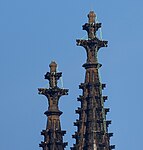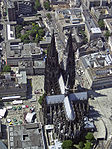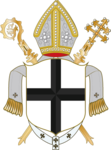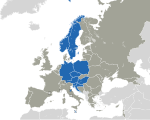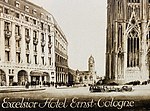Petersglocke
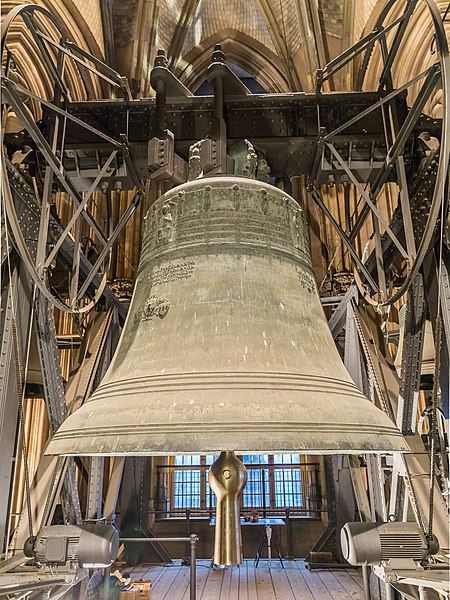
Saint Peter's bell (orig. German: Petersglocke [ˌzaŋkt ˈpeːtɐs ˌɡlɔkə]), referred to in the Colognian dialect as Decke Pitter or Dekke Pitter (Colognian: [ˌdekə ˈpitˑɐ] (listen)) and in common parlance as Dicker Pitter (German: [ˈdɪkɐ ˈpɪtɐ]; i.e. "Fat or Big Peter"), is the largest bell in Cologne Cathedral. It was cast in 1923 by Heinrich Ulrich in Apolda and hangs in the belfry of the south tower. With a weight of approximately 24,000 kilograms (53,000 lb), a clapper weighing ~700 kilograms (1,500 lb) and a diameter of 322 centimetres (10 ft 7 in), it is the second largest (horizontally mounted) freely swinging ringable bell in the world, after the bell of the People's Salvation Cathedral.
Excerpt from the Wikipedia article Petersglocke (License: CC BY-SA 3.0, Authors, Images).Petersglocke
Domkloster, Cologne Altstadt-Nord (Innenstadt)
Geographical coordinates (GPS) Address Nearby Places Show on map
Geographical coordinates (GPS)
| Latitude | Longitude |
|---|---|
| N 50.9411 ° | E 6.9573 ° |
Address
Südtürm
Domkloster
50667 Cologne, Altstadt-Nord (Innenstadt)
North Rhine-Westphalia, Germany
Open on Google Maps
